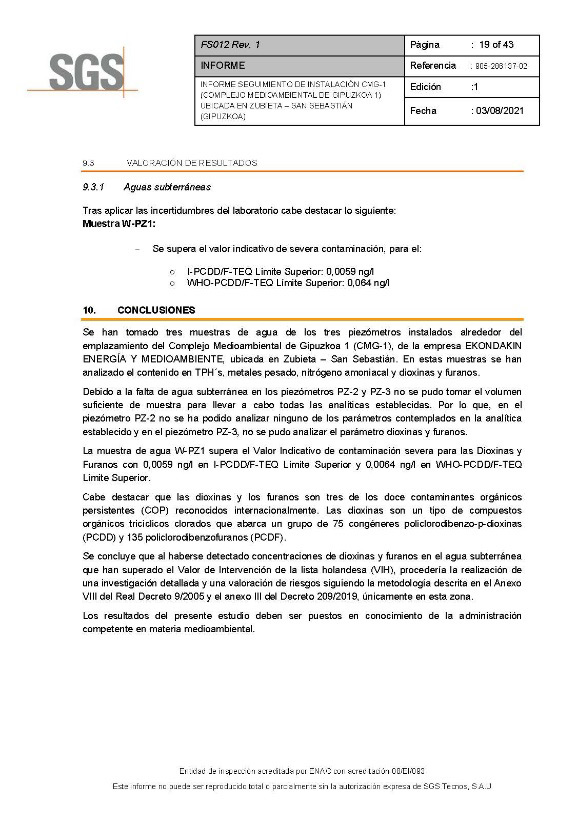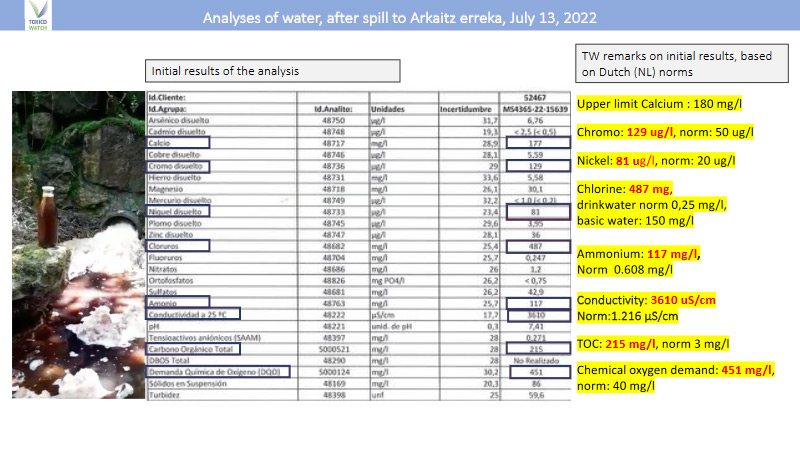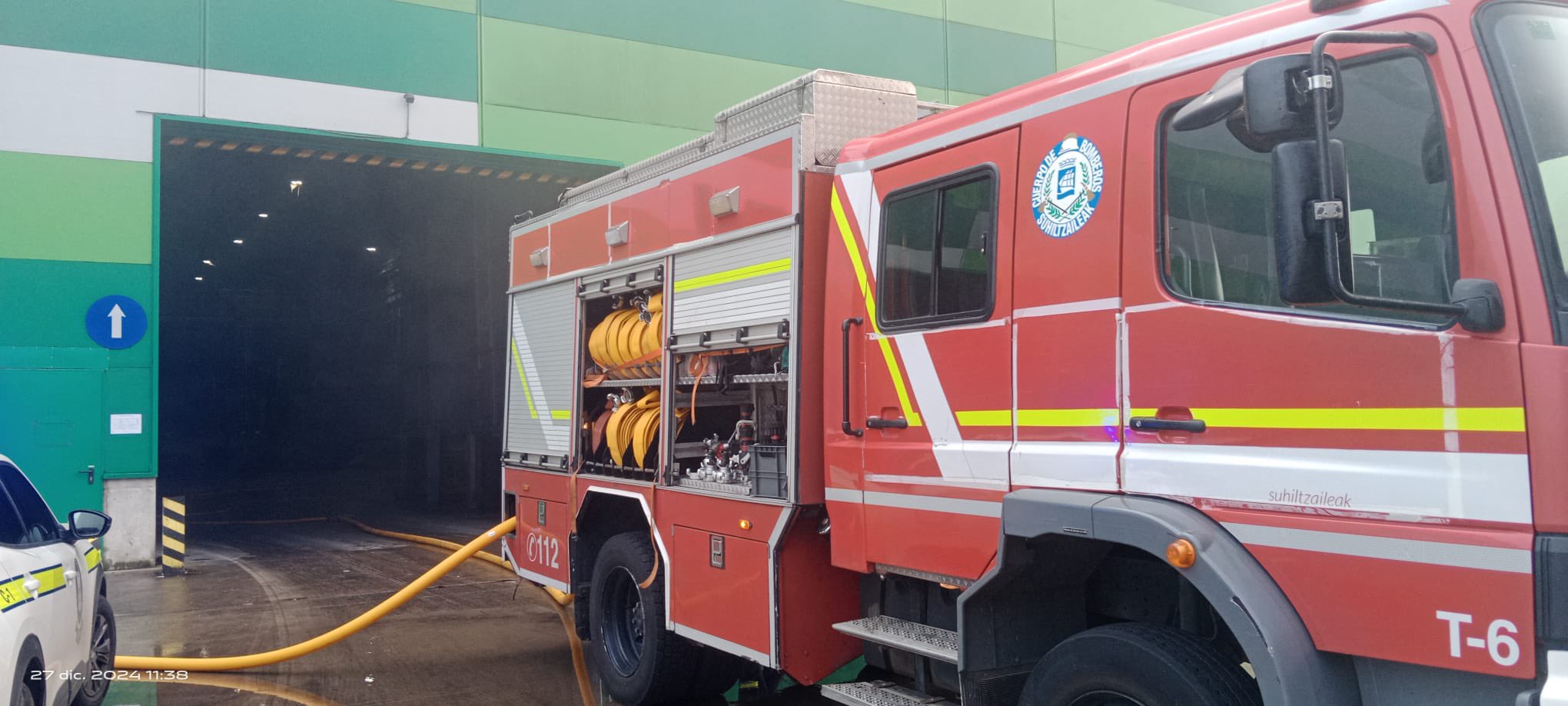Dioxins and other poisons are poured into the bridges, according to ToxiWatch and GHK reports.
- Three years after the incineration of Zubieta, air, soil, water and plants in the area are already being contaminated with dioxin and other toxic substances. This has been demonstrated by studies carried out by the Dutch foundation ToxiWatch with samples from 2021 and two of the companies IDOM and SGS within the Environmental Monitoring Programme to be presented annually by the consortium GHK, owner of the incinerator, to the Basque Government. The Anti-Incineration Movement has just explained these worrying data.

The Anti-Incineration Movement (VAM) has reached the constant of two different sources: Zubieta incinerator is polluting the environment with dioxins, PFAS, heavy metals, etc. and the remains of this contamination can already be detected in eggs, land, water, sludge and mosses collected for analysis near the incinerator.
The first source of information is the research carried out by the ToxiWatch Foundation. As ARGIA explained in its day, the EAM commissioned the Dutch foundation ToxiWatch in 2019 to monitor the public and independent pollutants of the Zubieta incinerator. ToxiWatch has carried out three studies to date, the first prior to the official start of the incinerator to establish the ‘zero scenario’ of the situation, the second with samples collected in 2020 and the third with samples in 2021. EAM has just presented its results in Hernani on November 19. ARGIA offers the full report of ToxiWatch on this link.

Following the analysis of data from 2021 of ToxiWatch, it is noted that high amounts of dioxins have been found in the mosaic mosses and eggs collected together with the incinerator, the type of dioxins found (the section ‘dioxin’ collects different molecules) are the same as in the environment of other incinerators in Europe, significant amounts have been found in the remains of contamination by specific PWC substances and compounds.
In the ToxiWatch analysis, members of the EAM consider that there is a comparison with data from other incinerators already working in Europe on dioxins, PFASs, heavy metals, etc. In fact, the monitoring of three incinerators in Madrid, Lithuania and the Czech Republic is being carried out in cooperation with ToxiWatch de Zubieta, and in comparison with the samples thereof, the incinerator in Zubieta immediately gave very high values to the mosses and plants in the vicinity of the facilities, such as those of the Mingoma waste incinerator.
The second source of the pollution reported by the incinerator of Zubieta is the information provided to the Basque Government by the consortium of GHK owner of the plant and the management company Ekondakin: the documentation of the Environmental Monitoring Programme to be presented annually by this type of facility. EAM members highlight two documents found throughout history: SGS and IDOM commissioned by the incinerator.

As can be read in the IDOM document, TPH hydrocarbons and phenols have been found in the soil next to the incinerator above the levels permitted by Spanish legislation. IDOM also found contaminants in groundwater, but the analysis of the samples attributed the contamination to some incidence in the process. On the contrary, the SGS company did find contamination by dioxin and furan in the groundwater of the incinerator, in addition to a high quantity, says (in Spanish) that in addition to not being in conformity with Dutch legislation, it exceeded the level of “gravity to intervene”. Since in most countries the levels of these hazardous pollutants are not well defined, researchers take as standard values those established by the Dutch government.
In the reading of the members of EAM there is a clear link between these underground pollution notes that have been left ‘forgotten’ among the roles of the bureaucracy in previous studies and the disaster observed in Arkaitzerreka since 2020. In that year the fish and eels of this stream appeared dead, and since then the poisoning has not only not been interrupted, but has become more serious and spectacular, according to the area’s ‘limp’ since July 2021.

“As for the contamination of Arkaitzerreka – EAM has denounced – the GHK officials said first that ‘it is not ours, it has not created incinerators’… but they already had the reports of IDOM and SGS. They lied. Subsequently, recently, the Ura Agency has been asked for authorisation for the construction of a warehouse in front of the station located under the incinerator that leaves Arkaitzerreka and the pumping of its water to the sanitation network, by sending it to the Loiola sewage treatment plant. Furthermore, as we have learned from good sources, the GHK recognises in its internal meetings that there have been two fires in waste storage tanks that now have leaks. Therefore, groundwater pollution is there, they cannot find solutions, and that is why they want them to cover and disappear, so that pollution flows further and, by the way, to cover a source of pollution information.”
Meanwhile, the ToxiWatch Foundation continues its research and recently voluntary members of the EAM have collected samples that will give data on the contamination of 2022: eggs of small private hens in the area, moss, water, river sludges, leaves of different plants and others. Strict monitoring of the entire sample collection process is carried out from the Netherlands, as can be seen in the 2021 study document: the sampling times and areas are properly documented, collected and sent to laboratories in accurately selected containers, etc. The independent scientific study of the incinerator is financed by crowdfunding among the population and with the collaboration of several municipalities.




















